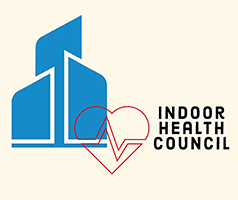Making a Business Case for Healthy Schools
Healthy Schools pay in almost every way. “Almost” qualifies the statement since an investment is required to implement a systemic model with guaranteed returns. Once a system is in place, you can remove the “almost”.
Investment Incentive
In 2002, Bill Fisk, of Lawrence Berkeley National Laboratory (LBNL), estimated national annual returns of improved indoor air quality “of $6 to $14 billion from reduced respiratory disease; $2 to $4 billion from reduced allergies and asthma; $15 to $40 billion from reduced symptoms of sick building syndrome; and $20 to $200 billion from direct improvements in worker performance…” and that fiscal returns of better indoor environments may exceed costs by 900-1400%.
While the Fisk report applies to buildings generally, its value is amplified in the educational environment due to the vulnerable populations in pK-12, high asthma rates in schools, and greater population density in both higher ed and primary school facilities.
A May 2013 LBNL study found that increasing classroom ventilation rates may decrease “illness absence by 3.4%, increase attendance-linked funding to schools by $33 million annually, and increase costs only $4 million” (Ref 1).
Modernizing HVAC systems−improving ventilation and comfort−costs money upfront, but saves money over time, especially when coupled with energy recovery stipulated by ASHRAE 90.1-2010; the reference standard and code for commercial buildings.
Heat Recovery Ventilators (HRVs) and Energy Recovery Ventilators (ERVs) recover much of the heating or cooling energy from stale exhausted air while transferring that energy to fresh air brought indoors.
Systems Pay
The whole is greater than the sum of the parts. This has been proven repeatedly by schools, for example, using an Energy Service Company or ESCO under a performance-based contract enabling a multifaceted, system approach. This is not to suggest all schools should use an ESCO, but contracted service companies perhaps best demonstrate how healthy buildings become profitable through systemic rather than part-smart change.
Hesperia Unified School District (HUSD), founded 1987 in San Bernardino County, California hired an ESCO under an Energy Performance Contract to develop and deploy a modernized system across 22 campuses and the district office including:
Upgrading 300 classroom heating and cooling systems.
Installing LED lighting, a computer power management system, and building automation with motion sensor controls for HVAC and lighting.
The project cost was $13 million, and the lifecycle savings were estimated to be $28 million. Three months after system installation, energy costs were reduced by 31%.
With payment contingent on performance, an ESCO is compelled to earn its money by saving the school money and providing other benefits such as reducing CO2 levels in classrooms.
A 2014 study published in the Journal of School Health found that for each 100 parts per million (PPM) decrease in carbon dioxide [CO2] there was a corresponding ½ day per year less absenteeism (Ref 2).
Sound Decisions
A quiet classroom is important to learning. A 2014 study showed that each 10 decibel (dB) increase in noise, lowers math and language scores of students by 5.5 points (Ref 3).
Check sound levels using a db meter (<$25) keeping background classroom sounds at or below 35dBa−a norm cited by LEED−and use a speech intelligibility test:
- Recite a list of words from the back of the classroom, and have students write down what they heard.
- Tally the % of correct words. The Acoustical Society of America (ASA) notes in some classrooms, speech intelligibility is 75% or less; equal to missing one out of four words spoken!
Ceiling, wall, and flooring systems can be modified to absorb noise, enhance speech, and reduce echo. The ASA offers a free download of ANSI Standard 12.60, Acoustical Performance Criteria, Design Requirements, and Guidelines for Schools.
Lighten Up
In a Pacific Gas and Electric company study, students in daylighted classrooms finished math tests 20% faster and reading tests 26% faster than pupils without daylighting. Also, students with access to light from larger windows progressed 15%-23% faster in math and reading respectively. Students in classrooms with the most daylighting scored 7% to 18% higher than those with the lowest light (Ref 4).
In a 2012 study, students in the US showed a 36% increase in oral reading fluency when exposed to high-intensity light, while those in standard lighting conditions increased by only 17% (Ref 5).
Invest in lighting that most closely approximates natural light. Lighting consultants can help by identifying practical solutions that meet budget and site requirements.
When approached holistically, healthy schools do not cost, they pay.
References
- Association of Classroom Ventilation with Reduced Illness Absence: A Prospective Study in California Elementary Schools (2013)
- Classroom carbon dioxide concentration, school attendance, and educational attainment (2014)
- Association between ambient noise exposure end school performance of children living in an urban area: a cross-sectional population-based study (2014)
- Daylighting in Schools (1999)
- Effects of Dynamic Lighting on Student Learning (2012)




